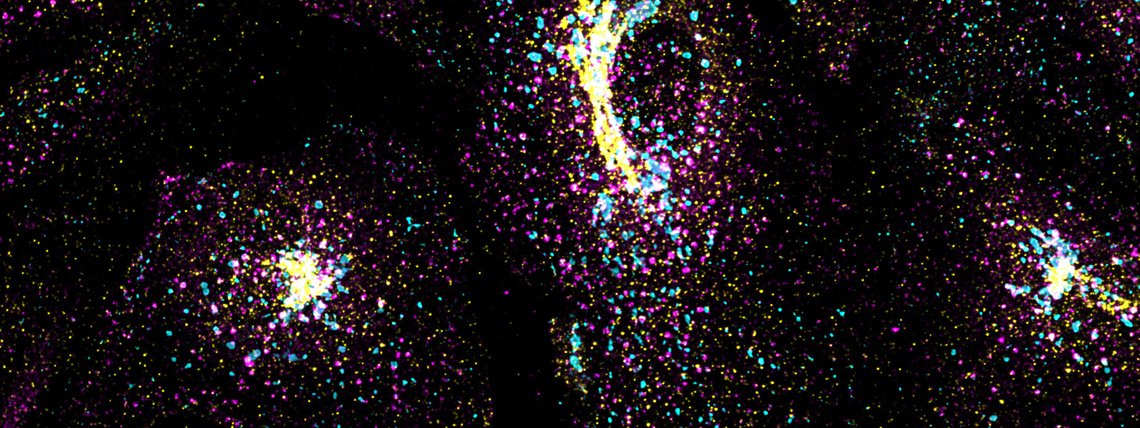The articles of the current edition are available on the new site.

The eukaryotic cell is the basic unit of animals and plants. At the microscope, it looks highly structured and subdivided in many membrane-bound compartments. Each compartment has a specific function, and its membrane is populated by specific molecules. How does the cell preserve this amazing internal order, and (in the absence of pathologies) does not degrade into a shapeless bunch of molecules? Such degradation is countered by a continuous process of molecule sorting by which similar molecules are collected and dispatched to the “right” destinations, similarly to what happens when a house is kept clean and tidy by daily chores. It’s still mysterious, however, how a living cell may achieve this task without a supervisor directing it.
In a recent Physical Review Letters paper, a collaboration of researchers from Politecnico di Torino, Università di Torino, Italian Institute for Genomic Medicine - IIGM, Istituto Nazionale di Fisica Nucleare - INFN, and Landau Institute for Theoretical Physics (Moscow), hypothesizes that this process of molecular sorting emerges from the combination of two spontaneous mechanisms. The first mechanism is the propensity of similar molecules to aggregate on membranes in the form of “patches”, or “droplets”, in the same way as water droplets form in a vapor cloud that is cooled down. The second mechanism is the tendency of such droplets to bend the membrane, leading to the formation and further detachment of small vesicles enriched in the molecular components of the original droplets. The various membrane compartments of the eukaryotic cell act thus similarly to the vessels and tubes of a natural distiller, or alembic, that continuously sorts and redirects molecular components toward the appropriate destinations.
In the published work, this process of molecular sorting is studied with mathematical tools and computer simulations, showing that the propensity to aggregation is the main control parameter of the process. For each group of molecules there exists an optimal value of this parameter (neither too large, nor too small), such that the sorting process takes place with the maximum possible speed. Actually, some propensity to molecular aggregation is needed to drive the process, but when the propensity to aggregation is too large, the molecules “freeze” in a large number of small “droplets” that grow very slowly, and the overall sorting process slows down. Experimental observations of this distillation process in cells isolated from the blood vessels of human umbilical cords confirm this theoretical picture, and suggest that evolution may have led the cells to work in the optimal parameter region, where the sorting process achieves maximum efficiency.
These findings are of particular interest, since the misregulation of molecular sorting is a hallmark of severe pathologies, such as cancer.The theoretical identification of the parameters that control the process is an important first step toward a better understanding of the origin of such disruptions and the development of therapies.
The research was supported also by: Fondazione Collegio Carlo Alberto - Torino, Russian Academy of Sciences, National Research University Higher School of Economics (HSE).